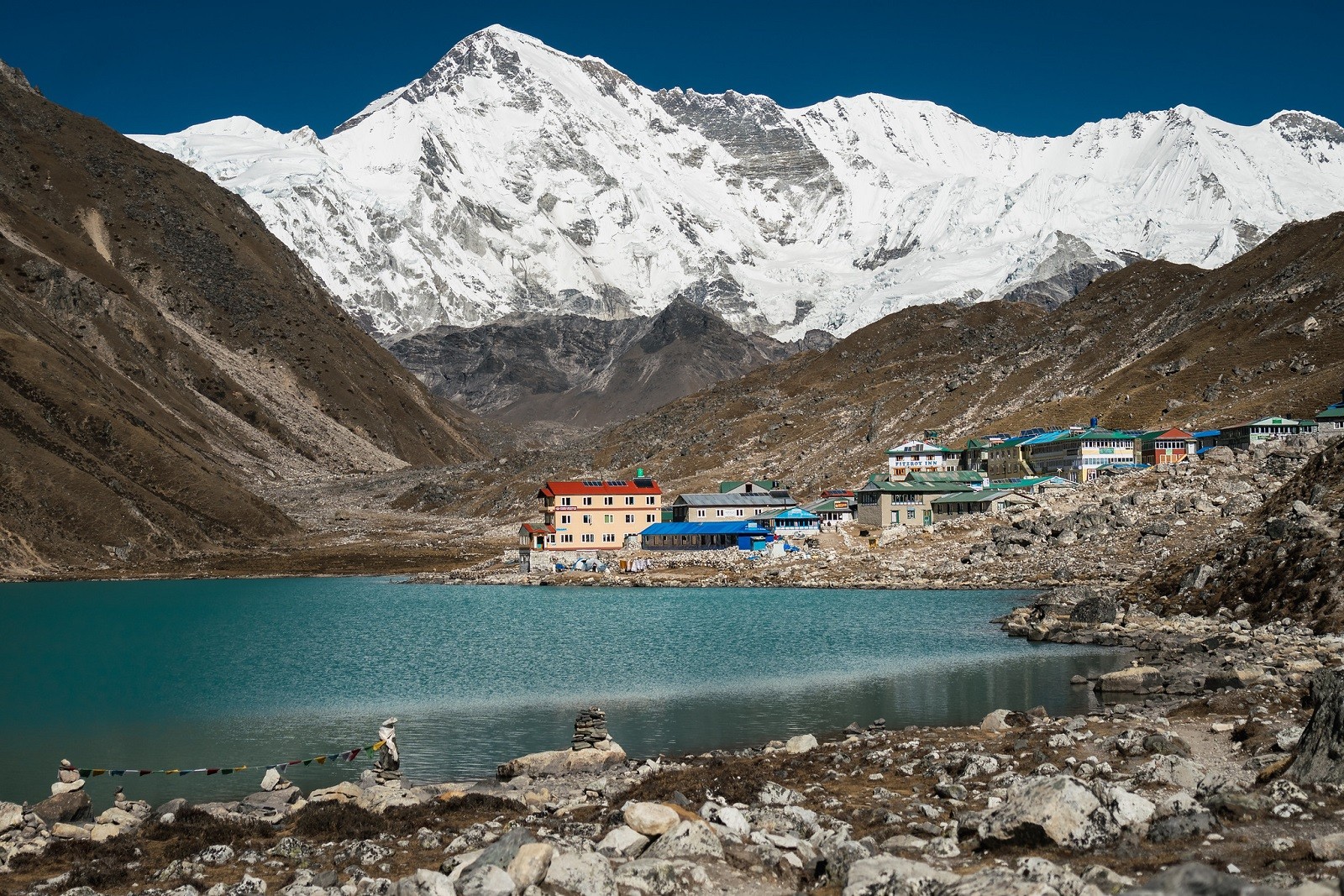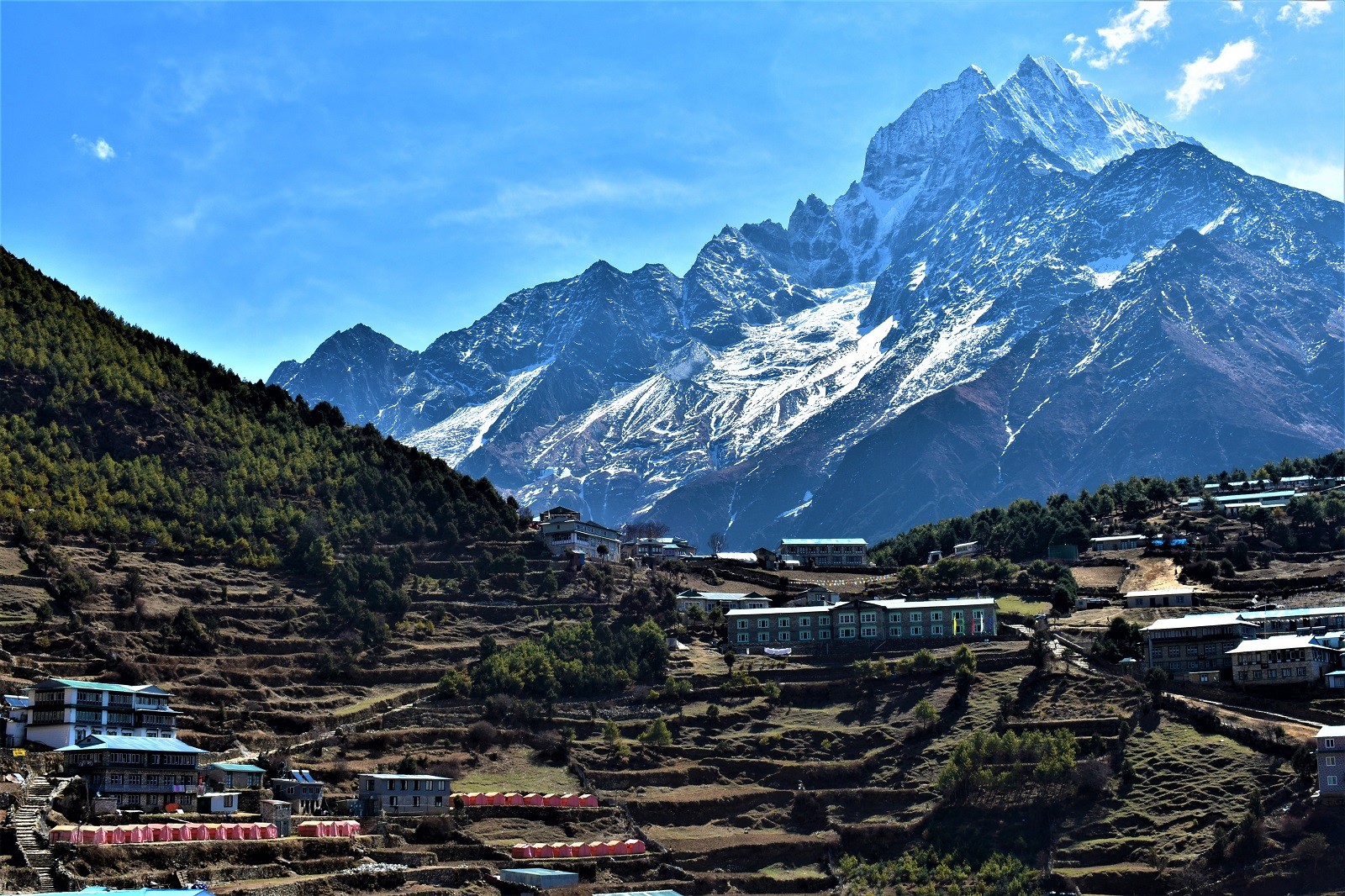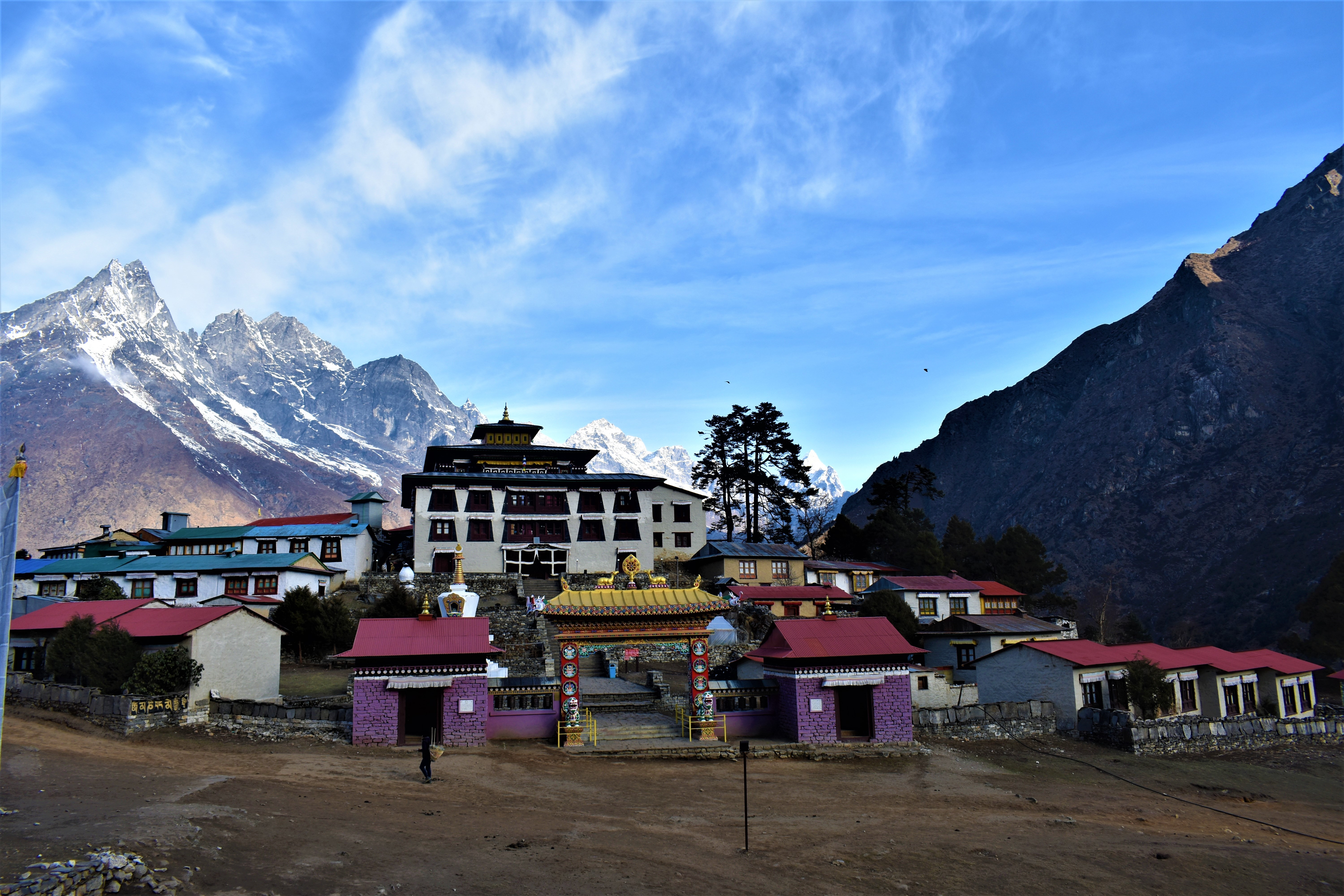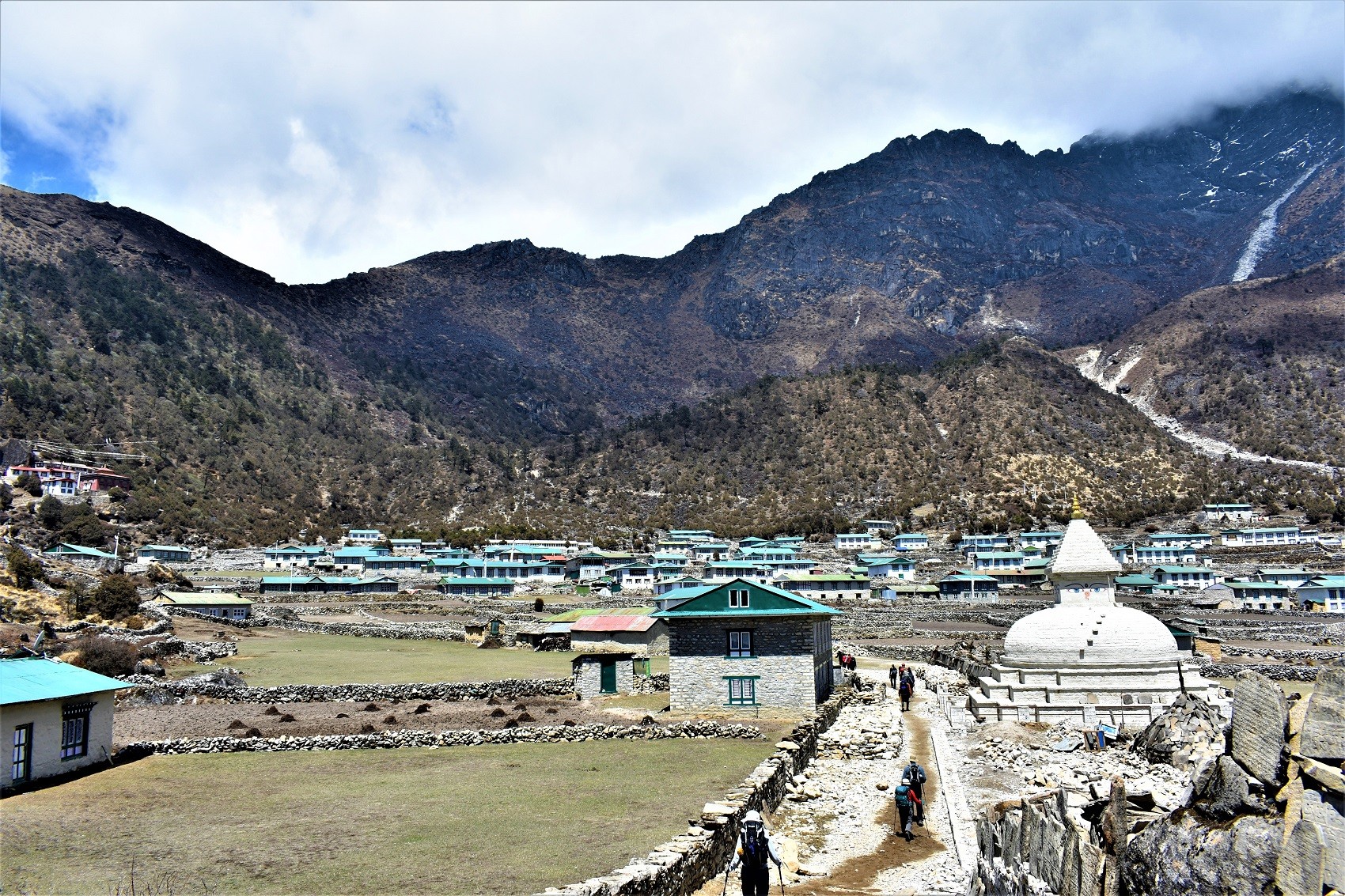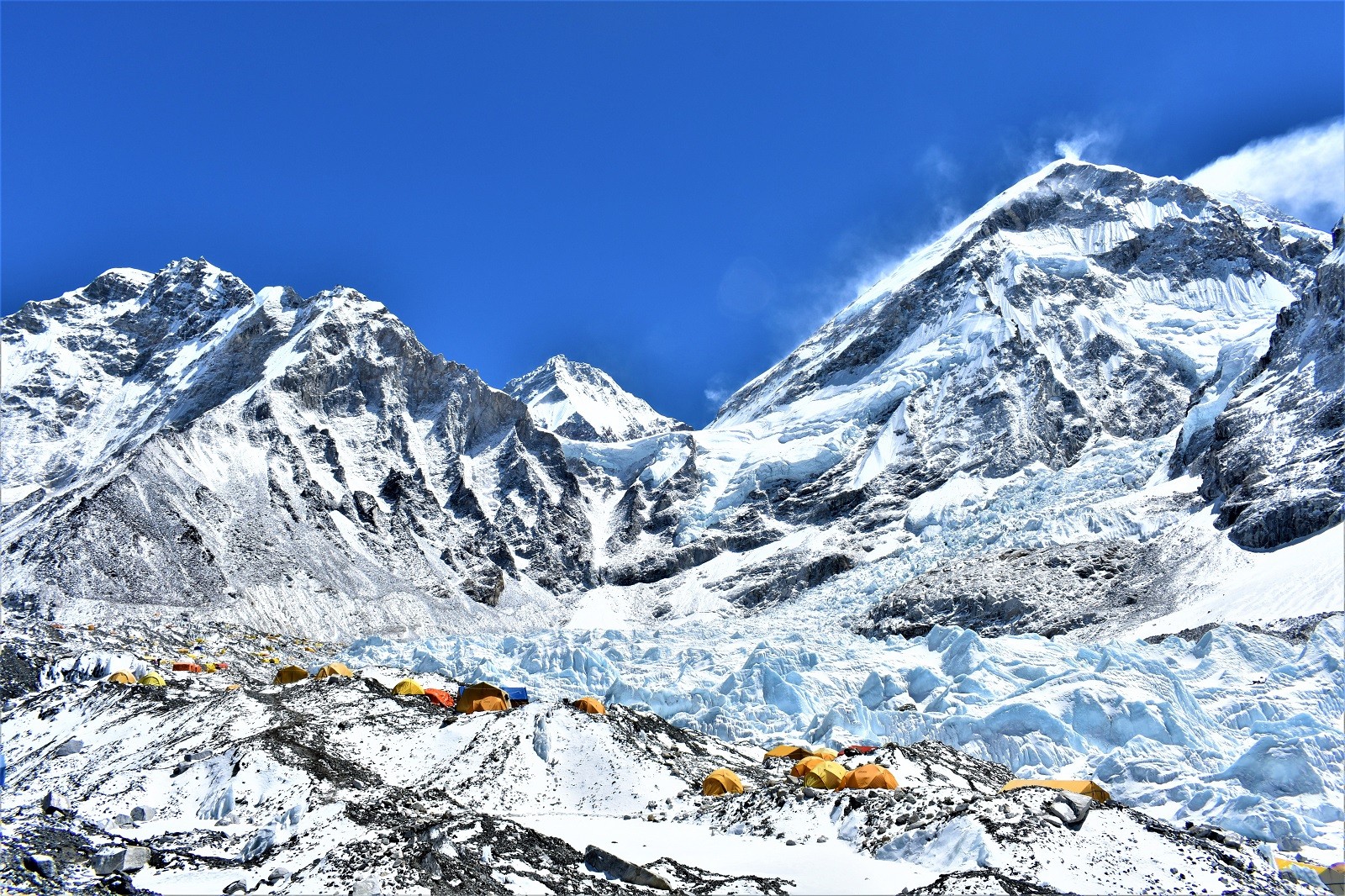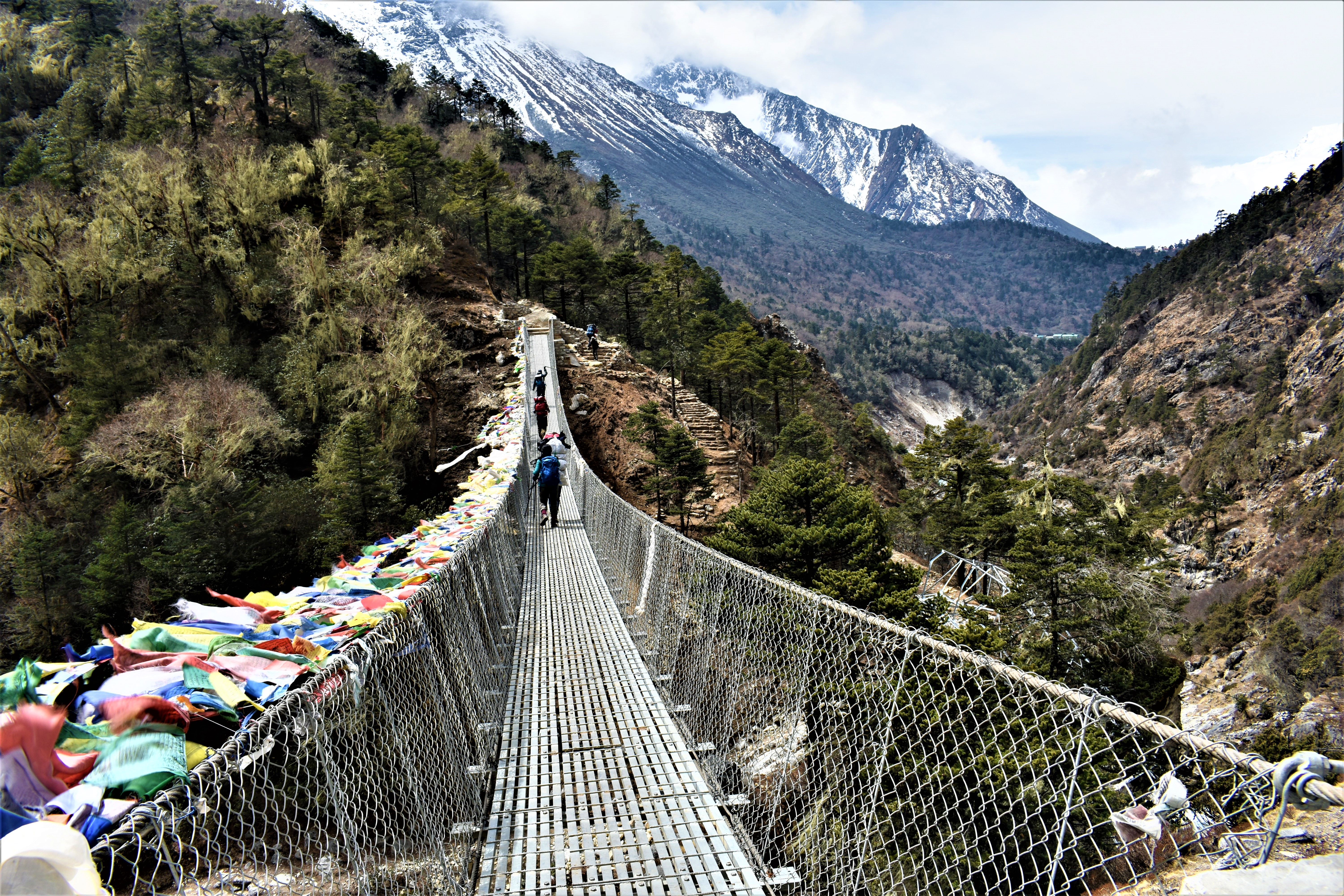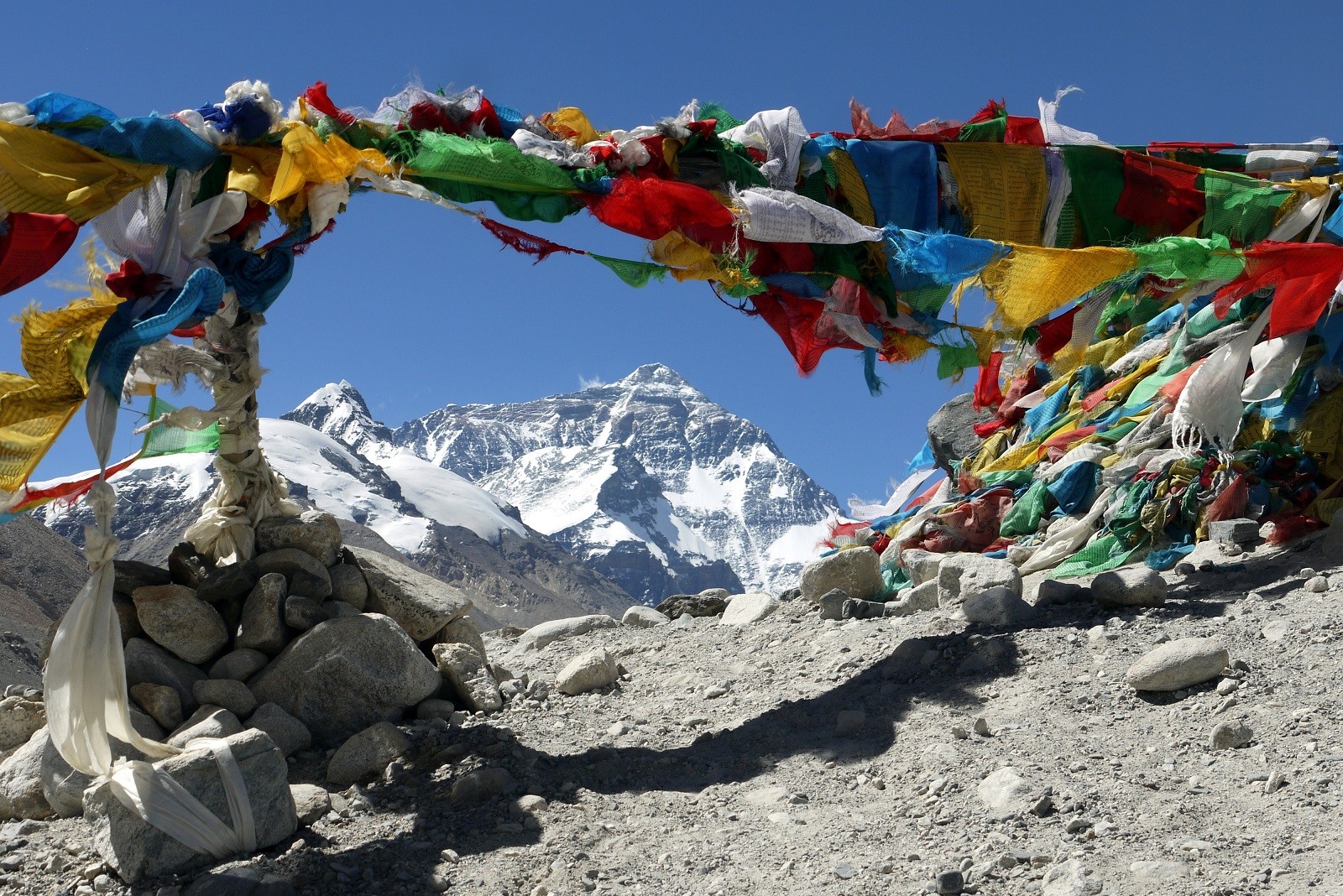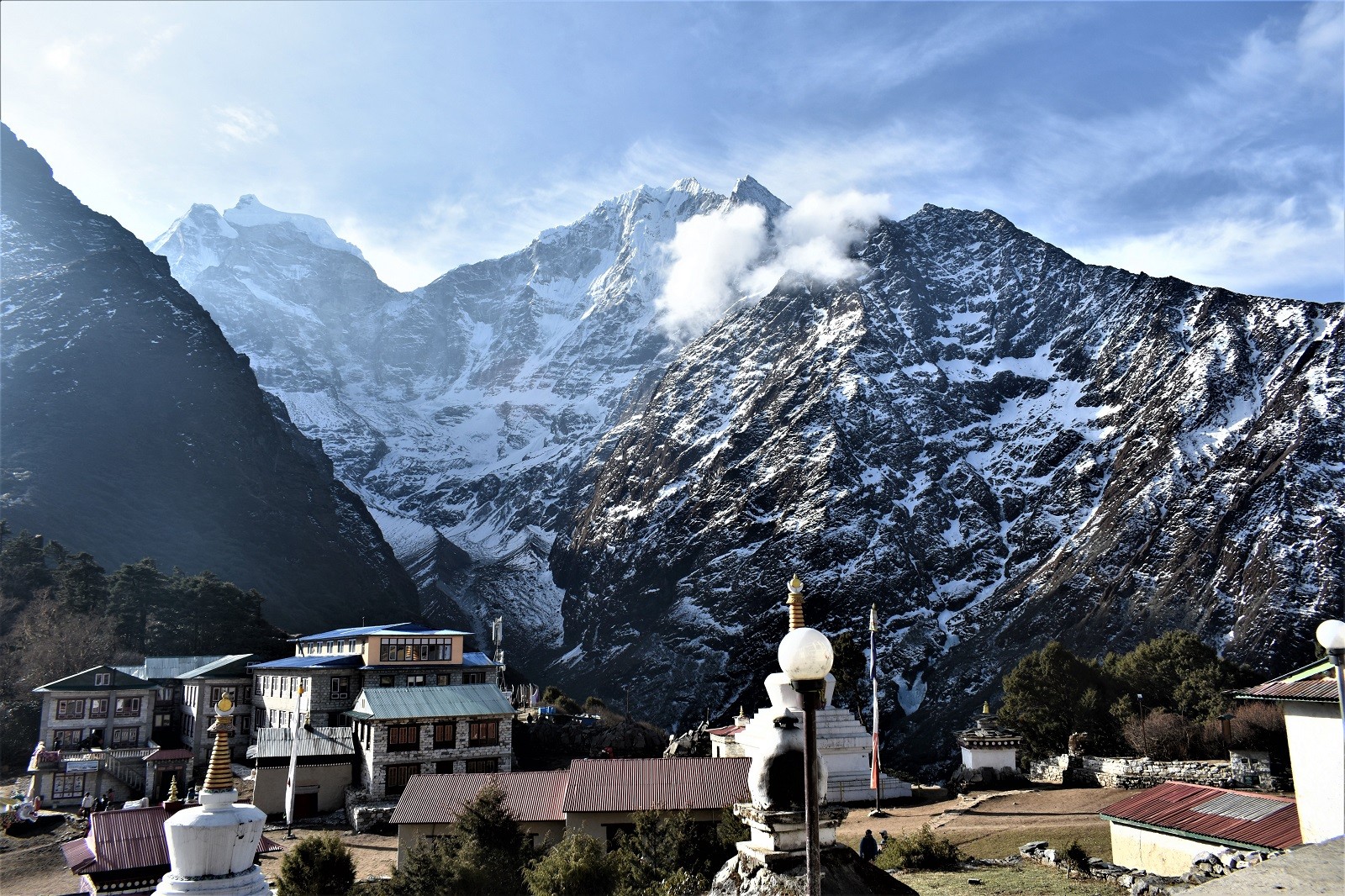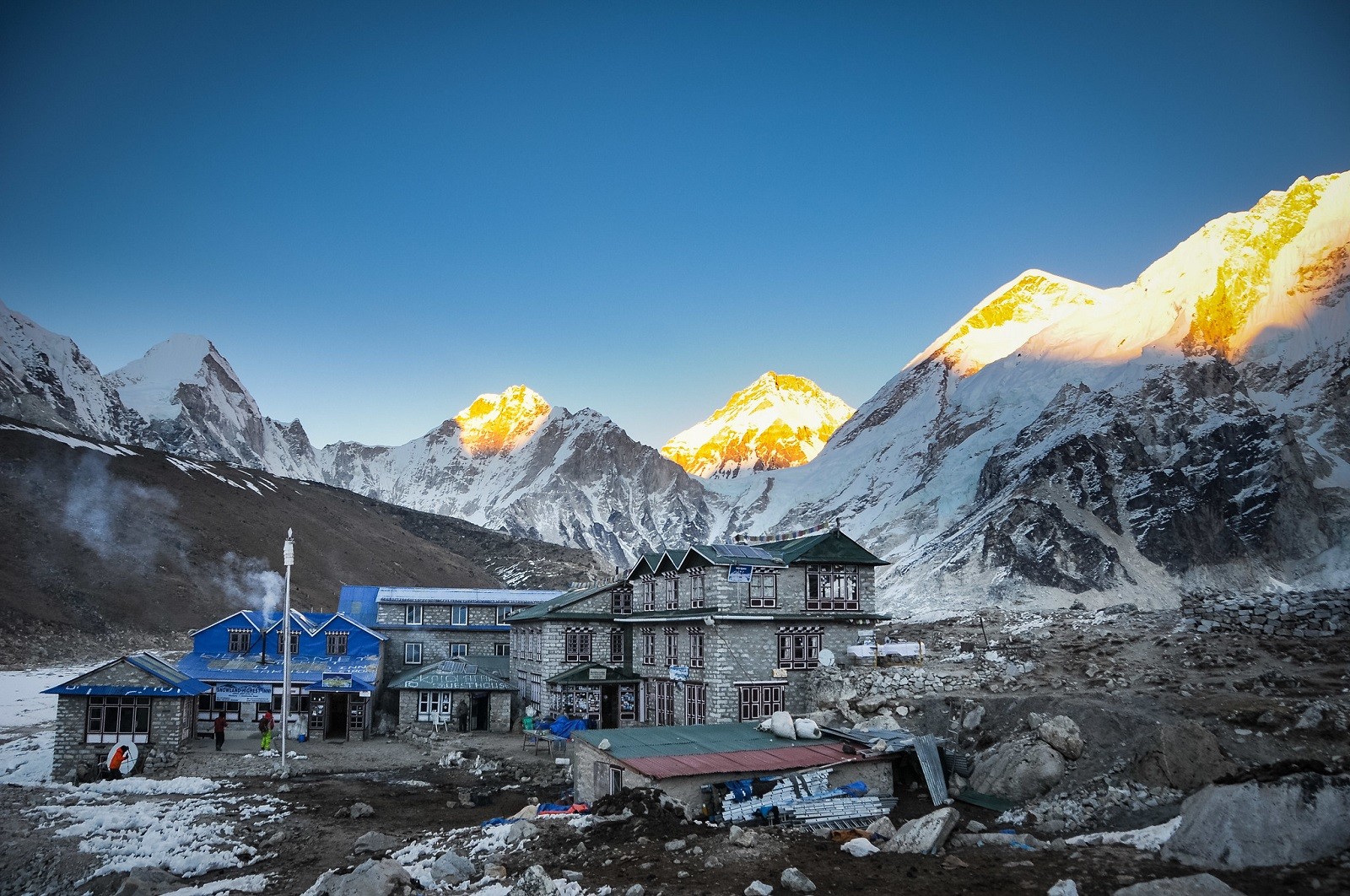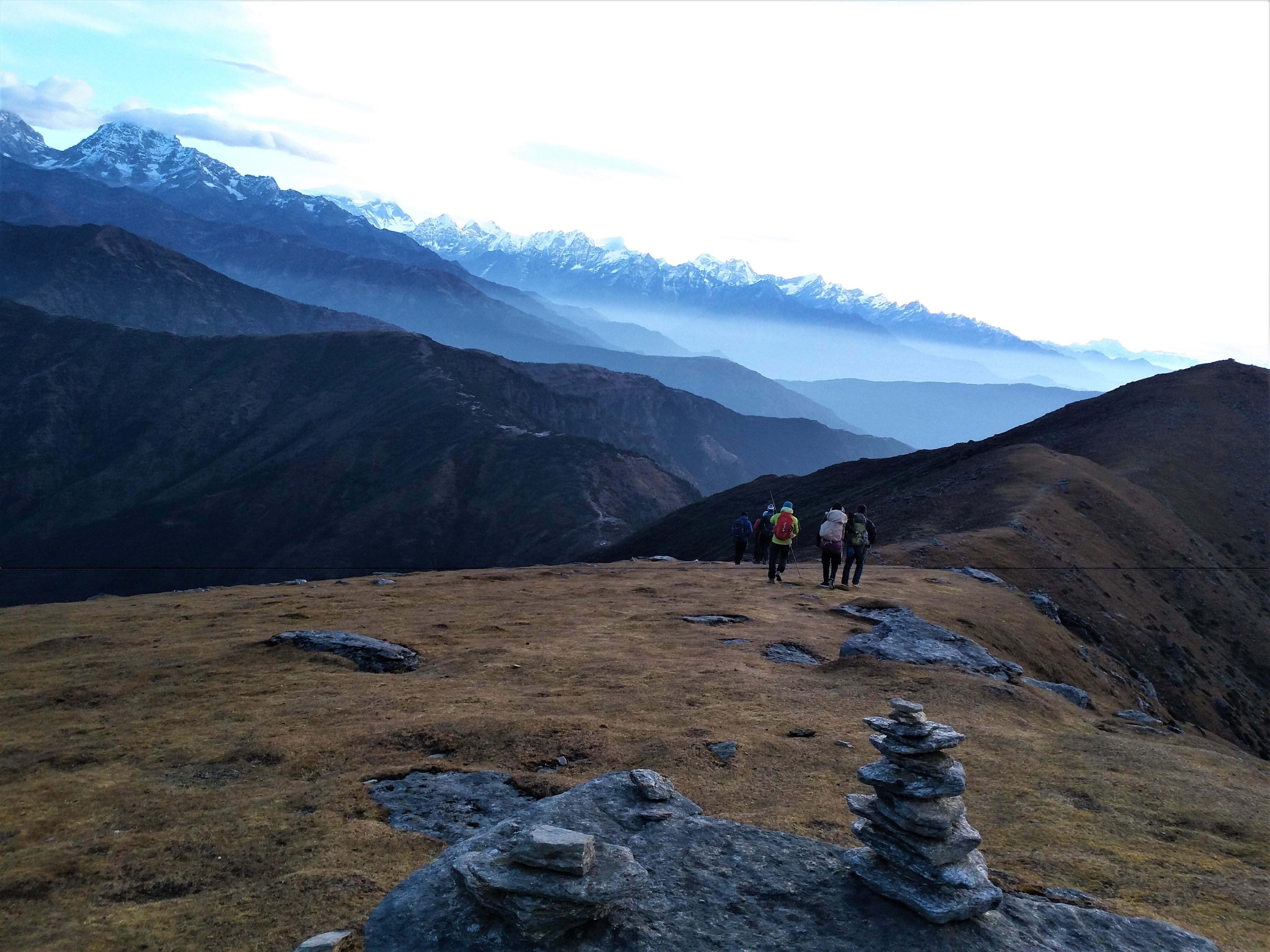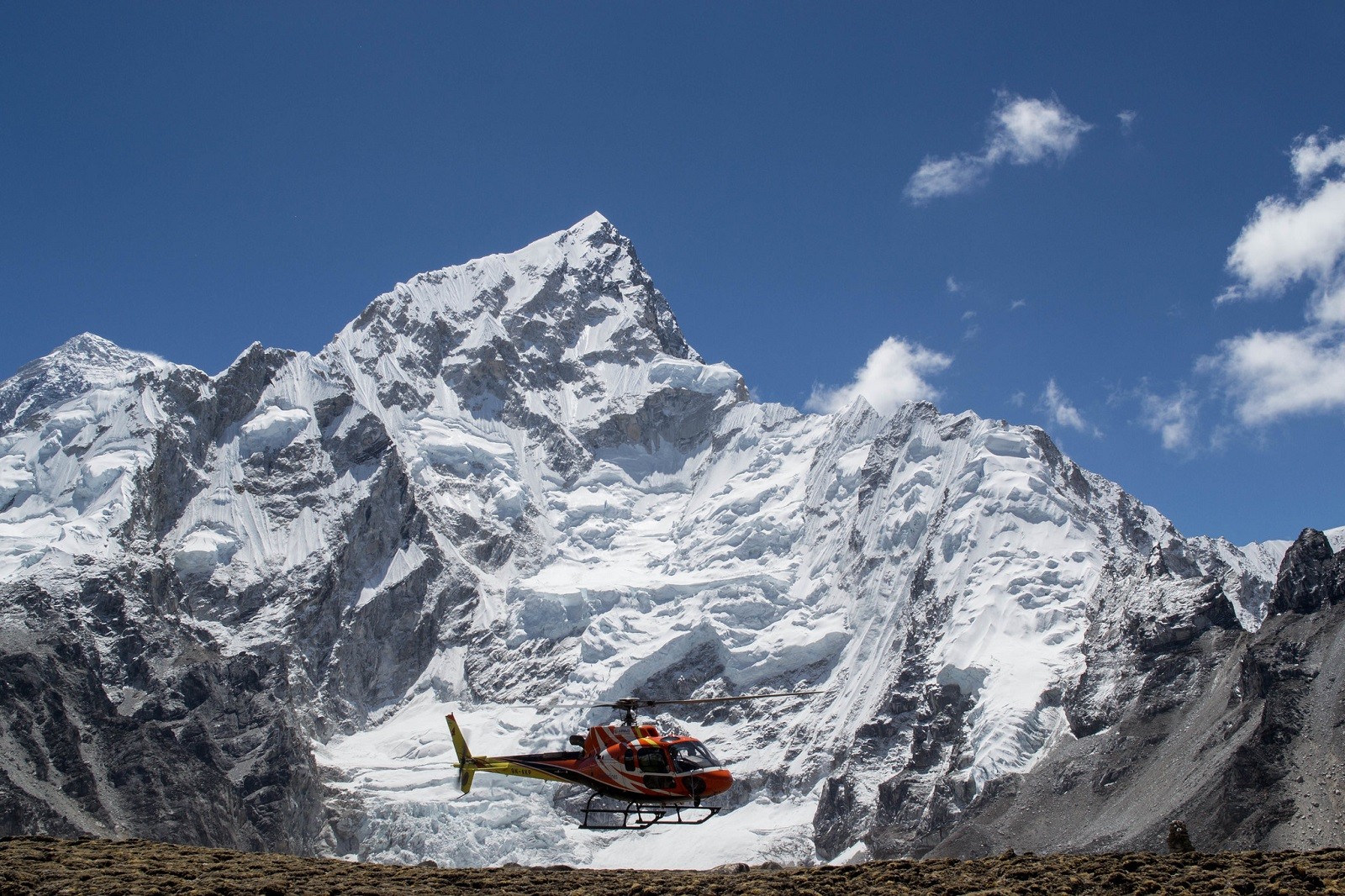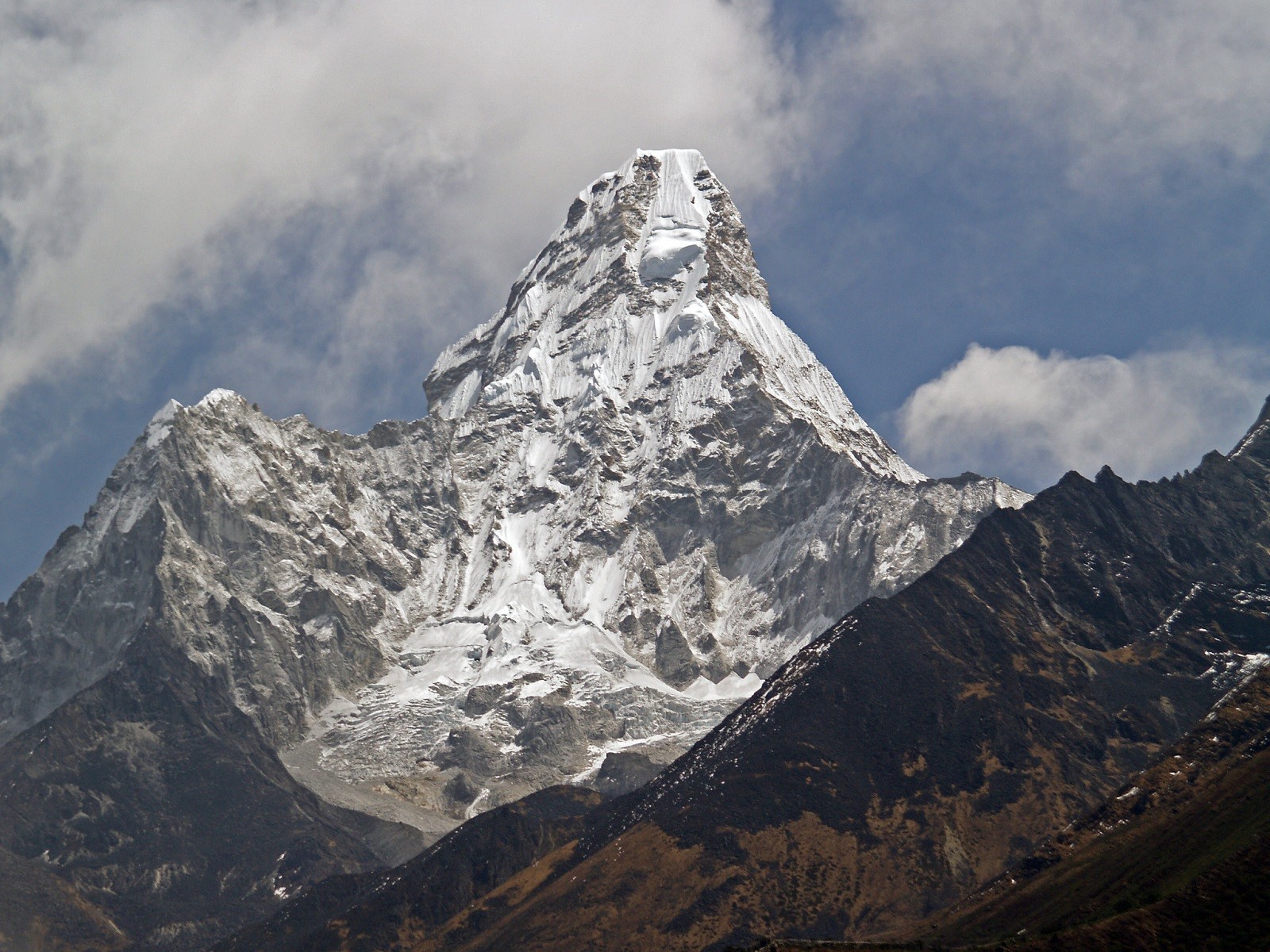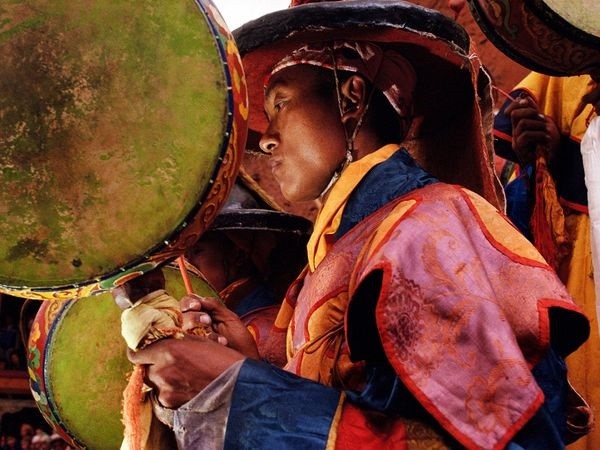The Everest region is the most well-known of all the trekking routes all around the world. This region is one of the best trekking for adventure devotees with full of ultimate natural splendor. The region encompasses Sagarmatha National Park, home of the tallest mountains like Mt. Everest, Lhotse, Nuptse, Amadablam, Cho Oyu and other several mountains.
Besides the captivating scenery, one has the opportunity to witness the local Sherpa culture, a people recognized for their friendliness, faithfulness, and incredible strengths and endurance in the high mountains of Nepal. Trek to Everest region gets to experience extensive ranges of flora and fauna in Sagarmatha National Park, a world heritage site. The trails wind through secluded valleys, through small picturesque villages across high mountain passes and past isolated monasteries.
Nepalese states massive peak as Sagarmatha which means the goddess of sky likewise, Tibetan people say Chomolungma which denotes the goddess of the universe. The Everest Region, also recognized as the Solukhumbu region, featured with sweeping glaciers, magnificent snow-clad mountain, fragrant forest trails, and world well-known monasteries.
The Everest Region sited between 86˚31′ – 86˚58′ East longitude and 27˚47′ – 28˚71′ North Latitude. Lies about 90 km northeast from Kathmandu. It encompasses three sub-region – Khumbu (Namche and Khumjung Village Development Committees) in the north, Pharak (Charikharka) in the middle and Solu in the south.
Nowhere in the globe is more remarkable than in the Everest region. The Everest region offers several treks that is suitable for family with children, school groups and solo. Here is the list of the best trekking in the Everest region that must not be missed in 2020:
1. Everest Base Camp
Everest Base Camp trek lets you soar from 2,800 meters to 5,300 meters. Annually, thousands of trekkers visit to catch a sight of one of the globe’s most renowned mountain Mount Everest Base camp- the foothills of the tallest mountain on the globe- Mount Everest.
Getting a glimpse of the notorious Khumbu Icefall and viewing expeditions getting ready for their bid to the highest summit on earth from base camp is another attraction of this trek. Also, jaw-dropping sceneries of Pumori (7,145m), Lingtren (6,697m), Khumbutse (6,623m), etc will greet as trekkers trek to Kalapathar nestled at the elevation of 5,550m from the base camp.
Further trekking on the Everest base camp route is like working your system through a spiritual art piece combined with the most inspiring soaring peaks you have ever imagined of. The trekkers get energized with the prayers wheels, fluttering prayer flags and enormous hand-carved prayer stones dotted along the trail.
The route also weaves through awe-inspiring high suspension bridges adorned with prayer flags, milky river (Dudh Koshi), stunning alpine landscapes, quaint Sherpa settlement and enjoy a delicious meal in cozy tea houses. Even trekkers get a chance to encounter rainbow-colored vibrant Himalayan monal pheasant, snow cock, magnificent eagles and many wildlife along the trail.
Moreover, trekkers get to retrace the footsteps of world-famous mountaineers, comprising Edmund Hillary and Tenzing Norgay who made their historic Everest expedition in 1953. The ideal period to trek the Everest Base Camp is during April – May (spring) or October – November (autumn) which are regarded to be pre-monsoon and post-monsoon period respectively. There are less likely of rain and the colors of the season are in full swing at these times.
2. Everest High Passes Trek
Everest High Passes trek integrates all of the places of interest of the other treks in the Everest region into one single challenging journey.
Numerous trekkers make it their mission to traverse the notorious ‘high passes’ in addition to getting Everest Base Camp. Stunning and unparalleled mountain views, including the almighty Everest, Ama Dablam, and Lhotse can catch sight in a mere distance. The passes are challenging, and present an opportunity to acclimatize before reaching Base Camp and Kalapathar.
The route leads trekkers on a complete ring of the Sagarmatha National Park, passing through all the countless viewpoints and picturesque villages. The trail takes less trodden trails into the more isolated valleys adjacent to the main Everest Base Camp trail. Get ready for some solemn hiking and high-altitude mountain passes, as trekkers will be traversing over three passes, beyond 5000m: Kongma La, Cho La, and Renjo La. The trekkers have an option to take either two high passes trek or three passes trek.
3. Everest Base Camp Comfort Trek
Embarking into the base of the world’s highest peak is in almost everybody’s bucket list! Almost all of us have imagined of hiking through the beautiful lush landscapes and blooming flora with the mountains glittering in the backdrop for an experience of a lifetime!
Everest Base Camp Comfort Trek reaches the base camp of the highest peak whilst staying in the comfort lodges of the Everest region. This trek incorporates the trekking to the famous Everest Base camp trek but with added comfort. The Itinerary has been designed for those who prefer to undertake the trek to the base of Mount Everest with comfort.
The trek further provides a huge opportunity to explore around the world heritage site of the Sagarmatha National Park which hosts a diverse range of wildlife, vegetation. Many well-known flowing rivers, deep lakes, sunset and sunrise over the Himalayas are also the highlight of this trek. Morning sunrise view from height and traversing Dudh Koshi River (milky river) across through several short and long suspension bridges make the trek more thrilling. In addition, trekkers can gather overwhelming experience of walking through stone steeped hamlets and glacial valleys. Moreover, trekkers can indulge themselves in the jaw-dropping mountain backdrop with four of the world’s six tallest peaks of Mt. Everest, Mt. Lhotse, Mt. Makalu, and Cho Oyu soaring above everything in view.
4. Everest Comfort Lodge Trek
Everest Comfort Trek itinerary has been designed to accommodate trekkers who wish a relaxed stay while trekking on the classical route to Everest. The trek allows trekkers to soak the beauty of the Everest region in comfort while being able to experience the local culture of the nearby villages.
The trek commence from Lukla and takes into the core of the Khumbu region with an opportunity to stay in the comfort mountain lodges. Along the trails, you can have a close insight into the different landscapes and the traditional Himalayan lifestyle.
Want to join for this trek to have an adventure of a lifetime in complete leisure!
5. Gokyo Lakes Trek- The Himalayan gems
Gokyo Lakes trek is the popular trek in the Everest a region that takes you up a corresponding valley to the small lakeside settlement of Gokyo and then onto a series of isolated lakes even farther up the valley.
Any trekkers would be captivated by the turquoise waters of Gokyo lakes, glaciers draped on the Himalayas. Furthermore, the trekkers can soak the panoramic views of the 360-degree mountain ranges beyond 8,000m.
Gokyo Lake is the fresh alpine lake, comprising six main lakes which are believed to be the highest collection of freshwater lakes in the globe. Those who love the trekking in the Himalaya glacier, this is the best site to visit.
The first portion of the trek to reach Gokyo Lakes follows a similar trail for Everest Base Camp, so trekkers can include a visit to Gokyo Lakes to the approach to Everest Base Camp, or their return.
After reaching these Himalayan gems, trekkers have the option to ascend Gokyo Peak, which nestled 5,357 above sea level. The peak offers commanding views of four of the six highest mountains in the world: Everest, Lhotse, Makalu, and Cho Oyu.
6. Pikey Peak– Trek to Lower Everest Region
Situated at the altitude of 4,065m/ 13,335ft, Pike peak comprises some of the world’s best mountain vistas, which are not to be missed. Trekkers can witness Kanchenjunga in eastern Nepal right across to Makalu, Everest, Lhotse, and Cho Oyu and all the way to the Annapurna range west of Kathmandu. Legend has it that Sir Edmund Hillary himself stated the peak to be the best place from which to gaze upon Mount Everest. The name Pikey originates from the name of a Sherpa Clan god and the locals observe to worship their clan god.
Trekking to Pikey itself is a delight as trekkers hike through woodlands of birch and rhododendron. If trekkers visit in spring (March-May) then entire forests adorn with colorful rhododendron flowers. From May-October one can witness cattle grazing to meadow all over the area, reminding trekkers of why the newly opened trails from Shivalaya are called the ‘cheese trail’.
This trek is an ideal choice for those seeking to experience rural Nepal and provide jaw-dropping vistas of Everest on a full scale. From Kathmandu, trekkers have opted to drive or fly in to access the trek.
7. Everest by Helicopter
Everest by Helicopter Tour is ideal for those who have a limited amount of time but still want to savor the sight of Everest from the close proximity. This tour is one of the most unforgettable experiences you can do in Nepal.
Everest Heli Tour will give you electrifying views of the globe’s tallest mountain “Mt. Everest”. Besides, one can witness several neighboring peaks such as Mt. Lhotse (8,516m), Mt. Makalu (8,463m), Mt. Cho Oyu (8,201m) and an additional 27 mountains in the Everest area. You will get an opportunity to have hearty breakfast at the hotel (Kongde or Syangboche) of the highest elevation while drenching the view of the Mt. Everest at a close distance.
Even one can combine trekking with a thrilling helicopter tour by choosing Everest Helicopter Trek. Trekkers can start the trek from Lukla passing many villages all the way to Everest Base Camp and Kalapathar’s viewpoint. Then trekkers can descend to Gorakshep for the Helicopter ride back to Kathmandu. During the helicopter ride, you can enjoy aerial vistas of massive Mount Everest, Sherpa settlements and glacial valley.
Indeed, the Everest Helicopter trek and tour filled your life with more enthusiasm and delight once you step your foot to the Kalapathar vantage point that grasps surreal vistas over the whole Everest range.
Do you want to join a family with children and solo to see the tallest peak in the world without much effort?
8. Amadablam Base Camp Trek- Trek to the world’s beautiful mountain
Amadablam recognized widely as ‘Matterhorn’ among westerners due to its high ridges and steep faces. The title of the peak ‘Ama Dablam has a distinct meaning. Mount Ama Dablam (6,812 m) derived from the traditional language. The long glacial deposit on each side of the peak is formed resemble the arms of a mother “Ama” protecting her child. The glacier represents a necklace “Dablam”, the traditional pendant with pictures of god worn by Sherpa women.
Ama Dablam attracts any person who sets eyes on her. Ama Dablam Basecamp provides the marvelous backdrops of the Himalayan range of Everest the region with the world’s tallest Mt. Everest (8848 Meter), Mt. Lhotse, Mt. Nuptse, Mt. Lhotse Shar and numerous adjacent peaks.
This splendid Ama Dablam Base Camp Trek commences from Lukla following classic and renowned Everest Base Camp Trek. This trek designed for those who would like to see Everest, but do not have an adequate period to trek all the way to Everest base camp. Even the trekkers planning to embark on Everest base Camp can add Amadablam Base Camp as a side trek for acclimatization.
FAQ about Everest Region
How long does it take to walk to Mt Everest Base Camp?
Usually, the trek to Everest Base Camp consumes 14 days to complete on a 130km round-trip. It takes eight days to get to Base Camp and four days to get back down. Generally, the trek involves 9-day long trekking and 3-day acclimatization days.
Can you take a helicopter to Everest Base Camp?
The helicopter ride takes you to the base of Kalapathar picturesque hill for a magnificent backdrop of Mt. Everest. This tour can be done within a short span of time without exertion. Even you can combine Helicopter tour with EBC treks. For more information contact us.
What is the difficulty level of Everest Base Camp trek?
Everest base camp trek does not require professional trekking experiences. However, one should be physically fit and sound mental determination. It is advisable to involve in hiking, cycling, uphill climbing prior to the trek.
What is Altitude Sickness?
Altitude sickness, the mildest form being acute mountain sickness (AMS), is the negative health result of high elevation. It occurred by speedy exposure to low amounts of oxygen at high elevation. To know more about Altitude sickness link the article: Altitude Mountain Sickness: Causes, Symptoms, and Prevention
Can I apply for a visa online?
You can get visa online – filling the form and following the step by step procedure at http://online.nepalimmigration.gov.np/tourist-visa
Do I need to get a visa to travel to Nepal? What are the documents required to visit Nepal?
All nationals must hold a valid passport. Your passport must be valid for at least six months beyond your expected date of departure from Nepal. An entry visa for all except Indians for Nepal is required. You need to arrange these prior to departure with the relevant embassy/consulate or you even get a visa on arrival. Learn more: Visa and Documents requirement
Do I need to take permits to trek in the Everest region?
The trekkers who wish to trek the Everest region need a TIMS card, Khumbu Pasang Lhamu Rural Municipality Entrance Permit and Sagarmatha National Park permit. If you are trekking Pike Peak at Lower Everest region then, the trekkers require to obtain TIMS and Gauri Shankar National Park Permit. Nepal Sanctuary Treks is here to arrange all the permits and organize the customize treks for you.

